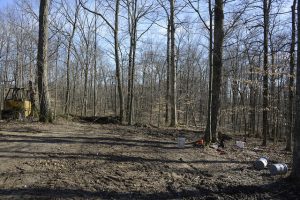While there are plenty of ecological, factual, scientific reasons not to log our state forests at current levels, there are also indisputable reasons in the realm of what’s good for the soul. This blog post by IFA member Julie James describes the psychological impact of seeing a public forest dismantled and knowing it won’t be the same in our lifetimes.
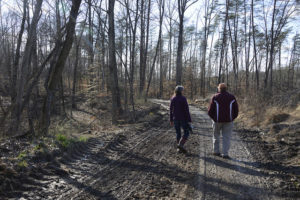 Words by Julie James / Photos by Martha Fox
Words by Julie James / Photos by Martha Fox
For the third year in a row, I have been experiencing grief instead of joy when I take a hike in the state forest a half mile down my dead-end road in eastern Monroe County, in Yellowwood State Forest.
One of the main reasons I moved here eight years ago was because I love forests and living next to a protected state forest seemed ideal. Here, I thought, wildlife would roam safely and trees could grow tall and old. I wanted to be near this beautiful natural habitat.
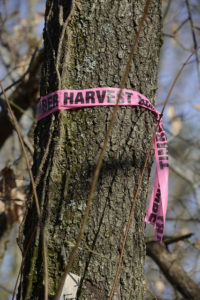
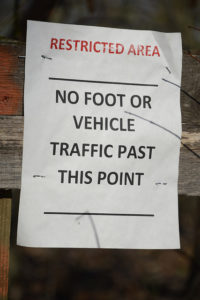 I still clung to my childhood belief that the government or someone out there protected the woods and its inhabitants. I didn’t have much reason to think otherwise. For five years, I would hike in Yellowwood with my family and dogs about 3-5 times weekly. It was blissful. We hiked in the day, and in the night with our headlamps on. We hiked in all seasons and watched the nuances of transitions from one season to the next. I listened to whippoorwills and coyotes and once or twice I changed my trajectory to give a rattlesnake more space.
I still clung to my childhood belief that the government or someone out there protected the woods and its inhabitants. I didn’t have much reason to think otherwise. For five years, I would hike in Yellowwood with my family and dogs about 3-5 times weekly. It was blissful. We hiked in the day, and in the night with our headlamps on. We hiked in all seasons and watched the nuances of transitions from one season to the next. I listened to whippoorwills and coyotes and once or twice I changed my trajectory to give a rattlesnake more space.
I count among my most magical memories: going cross country skiing down the trails, during the delightful polar vortex winters. I consider my dogs among the luckiest around to have run in the woods, smelling a thousand scents and roaming around with their best friends.
Three years ago, on a hike, I saw trees with ribbons on them. I slowly learned that they were marked to be cut down and harvested. I was devastated to learn that the state saw the forest as a crop, like corn. I felt helpless and frankly, confused. These magnificent trees are not a crop. They are home to a myriad of plant and animal life. Trees give us shade. They block noise pollution. Trees clean our soil and provide life-giving oxygen. They provide us inspiration, beauty and the rejuvenation of our spirits.
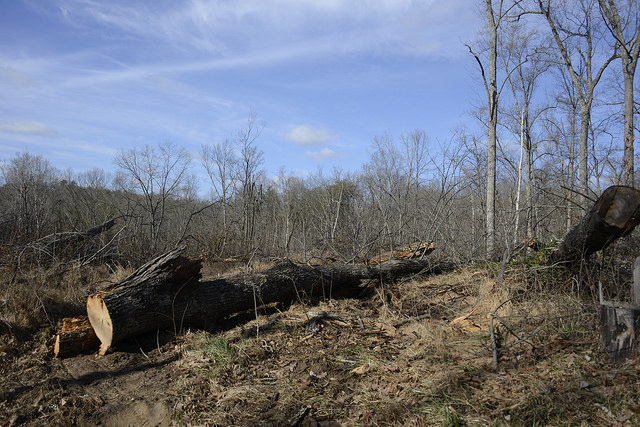 No matter how desperately I wanted it to be different, the logging trucks and machines moved down our road and began clearcutting the trees. I cannot express the level of grief I have felt as tree after tree — giant oaks, poplars, maple and hickory — that any outdoors person in the area loves and appreciates, was sawed down, topped, and taken away on logging trucks.
No matter how desperately I wanted it to be different, the logging trucks and machines moved down our road and began clearcutting the trees. I cannot express the level of grief I have felt as tree after tree — giant oaks, poplars, maple and hickory — that any outdoors person in the area loves and appreciates, was sawed down, topped, and taken away on logging trucks.
My hikes past the remains of these giant sentinels of the forest left me wondering how to cope with my feelings of loss. Never again in my lifetime would I see the splendor of the forest the way I had seen it before. I won’t live 100 more years to see the forests in Indiana be the way they were just 3 years ago. Even my kids will be challenged to see the Hoosier forests return to the forests we enjoyed so much as they have been growing up.
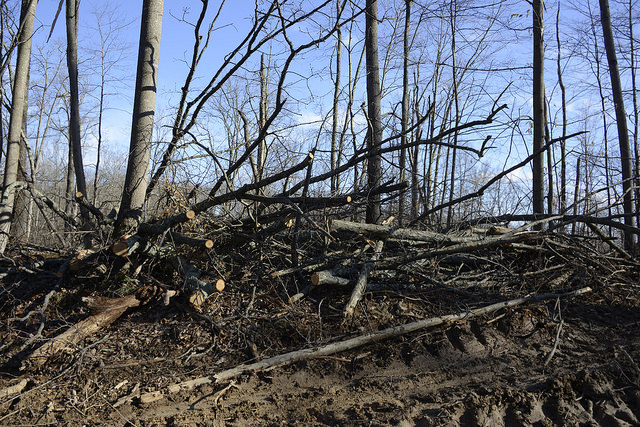
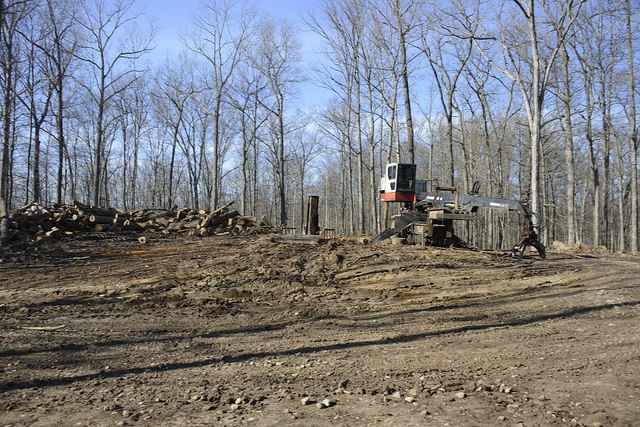 I’m also disheartened that I did not know about logging in state forests before I witnessed it up close and personal. I am upset that I didn’t even know to learn more about how unprotected our state forests are and that logging under the last few governors has increased 400%. And finally, as I often have discovered with environmental issues, I’m deeply disturbed that money is seen as more important than our precious environment and natural resources, to the point of being unsustainable.
I’m also disheartened that I did not know about logging in state forests before I witnessed it up close and personal. I am upset that I didn’t even know to learn more about how unprotected our state forests are and that logging under the last few governors has increased 400%. And finally, as I often have discovered with environmental issues, I’m deeply disturbed that money is seen as more important than our precious environment and natural resources, to the point of being unsustainable.
I told my closest friends about what was happening and we became forest activists in our own ways. I became inspired to find out how I could prevent this devastation from happening again. Now, three years later, watching parcel after parcel in these beloved woods get sold and cut, I have become more actively involved in protecting Indiana’s forests. I have learned that all state forests in Indiana are being logged.
It is unbelievable what is happening and how it is being done. I am impressed with organizations like Indiana Forest Alliance and others that are taking actions to spread information and facts as well as taking action. I strongly urge readers to find a way, even a small way, to take action to protect our state forests, and our natural world as a whole.

